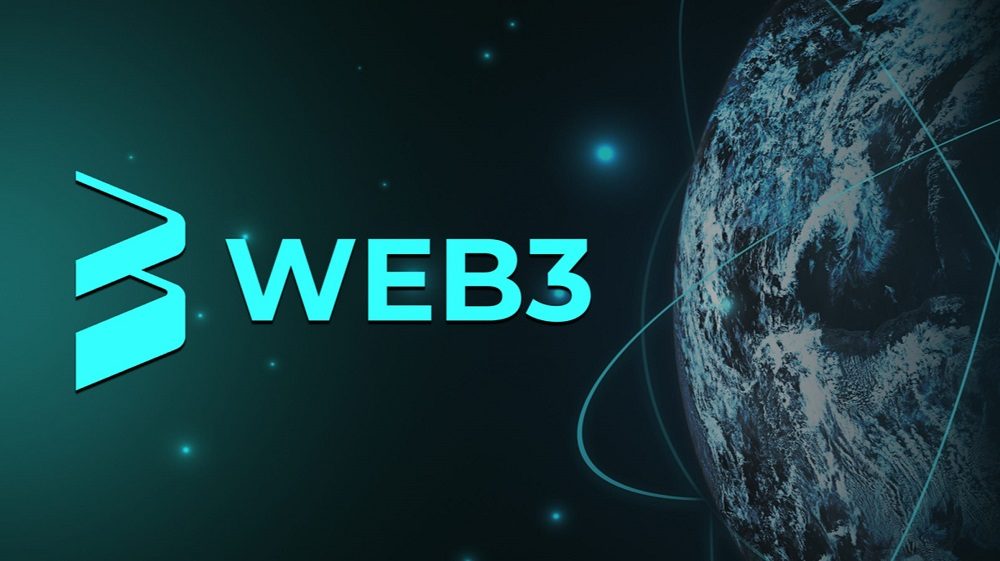
Web3: The Future of the Internet

The internet has come a long way since its inception, and blockchain technology is pivotal in its ongoing evolution. In this article, we’ll take you on a journey from Web1 to Web3, exploring the Internet’s past, present, and potential future.
Web1: The Static Web (1990-2004)
Think back to the early days of the internet, around 1990 to 2004. This era, Web1, was characterized by static web pages that users could read but not interact with.
In the age of information consumption, websites like Yahoo and America Online provided news, weather, sports, entertainment, and financial information. Web1 essentially transformed physical newspapers into global digital platforms accessible to anyone with an internet connection.

Pixabay/ Pexels | he transition from Web1 to Web2 injected dynamism and fun into the internet
Web2: The Interactive Web (Present Day)
Fast forward to the present, and we find ourselves in the era of Web2. This phase of the internet introduced interactivity, allowing users to read and interact with web pages. Platforms like Facebook and YouTube exemplify the essence of Web2, where users can like, comment, and upload content. Web2 ushered in a read/write model, making the internet a dynamic and personalized space.
Facebook users engage with one another through likes and comments, while YouTube empowers anyone to share their videos. The user experience is customized based on individual preferences, ensuring that no two news feeds are identical. However, the rise of Web2 also brought concerns about centralization, data privacy, and even political polarization.
Web3: The Decentralized Web
Enter Web3, a promising evolution of the internet that aims to put control back into the hands of users while retaining the interactive features of Web2. Web3 is read/write/own, where users actively govern blockchain-based networks through cryptocurrency tokens. As the network grows, the community reaps the benefits through the increasing value of tokens.

Business News/ Instagram | Web3 represents a vision where the control of the internet shifts from corporations to the hands of users
Why Web3 Is Necessary
The transition from Web1 to Web2 injected dynamism and fun into the internet but also raised significant issues. Web2 companies, such as Facebook and Google, offer seemingly free services at the cost of user privacy. They profit immensely from user data by tailoring it for targeted advertising.
More than 80% of Google’s revenue comes from advertisements fueled by user data. Yet, some data collection techniques tread on moral and legal boundaries. In 2019, Facebook faced a historic $5 billion fine from the U.S. Federal Trade Commission for privacy violations. Moreover, Web2 companies can abruptly change their terms and conditions or ban users at their discretion.
The curated news feeds introduced by Web2 have contributed to political polarization and mental health issues worldwide. Platforms are designed to be addictive, feeding users with sensational headlines and clickbait. This constant stream of divisive content adversely affects mental health, leading to anxiety, depression, and low self-esteem.
Can Web3 Address These Issues?
Decentralized applications (dapps) form the backbone of Web3, and they are not controlled by a single entity but governed by cooperative structures. Decisions are not made behind closed doors but are publicly documented on a blockchain, with input from a community of token holders.

Business News/ Instagram | The future of the internet is undoubtedly evolving
In a hypothetical Web3 scenario, major decisions made by Facebook or Google would require user approval before implementation. This could potentially mitigate issues related to data collection, content bans, and divisive content feeds that plague the Web2 landscape.
Challenges for Web3
However, Web3 is not without its challenges. While it promotes decentralization and privacy preservation, it may not be as decentralized as it appears. Initial token allocations for major public blockchains often include significant insider allocations, undermining the idea of complete decentralization.
Furthermore, many Web3 projects rely on early investors selling their tokens to the public for returns, leading to an unregulated crypto environment. It’s akin to the Wild West of the digital world, albeit with better marketing.
More in Tech
-
`
What’s Changing for Student Loans After Trump’s New Spending Bill?
The passing of President Donald Trump’s latest spending bill is shaking up more than just tax brackets and business deductions—it’s poised...
July 16, 2025 -
`
Why Big Tech Is Divided on the Future of Artificial General Intelligence
Fifteen years ago, the founders of DeepMind—Sir Demis Hassabis, Mustafa Suleyman, and Shane Legg—set a bold goal: “Build the world’s first...
July 1, 2025 -
`
Planning a Wedding? These Money-Saving Tips Actually Work
Weddings are meant to be memorable, not financially draining. But for many couples, the cost of tying the knot often brings...
June 24, 2025 -
`
Did MrBeast Really Borrow Money From His Mother for His Wedding?
YouTube star Jimmy Donaldson, widely known as MrBeast, sparked surprise when he shared a personal update on X. Despite leading the...
June 17, 2025 -
`
How Smart Technology Is Changing the Way We Travel
Technology has reshaped nearly every part of modern life, and travel is no exception. From how we plan trips to how...
June 12, 2025 -
`
Why Some Tech CEOs Are Replacing Themselves With AI Avatars
In a move that signals a shift in how corporate communication is handled, major tech CEOs are beginning to hand the...
June 3, 2025 -
`
Is Innovation Dead in American Pop Culture?
Has something changed in the way we engage with American pop culture? Scroll through your favorite streaming service, tune into the...
May 27, 2025 -
`
7 Key Steps to Start a Profitable Digital Products Business
Starting a digital products business offers an exciting opportunity to turn your skills and knowledge into a revenue-generating venture. Whether you’re...
May 20, 2025 -
`
Mercedes-Benz Introduces the Vision V – An Ultra-Luxury Electric Limousine
The introduction of Mercedes-Benz’s Vision V concept represents a significant advancement in the field of electric vehicles. This electric minivan is...
May 13, 2025














You must be logged in to post a comment Login